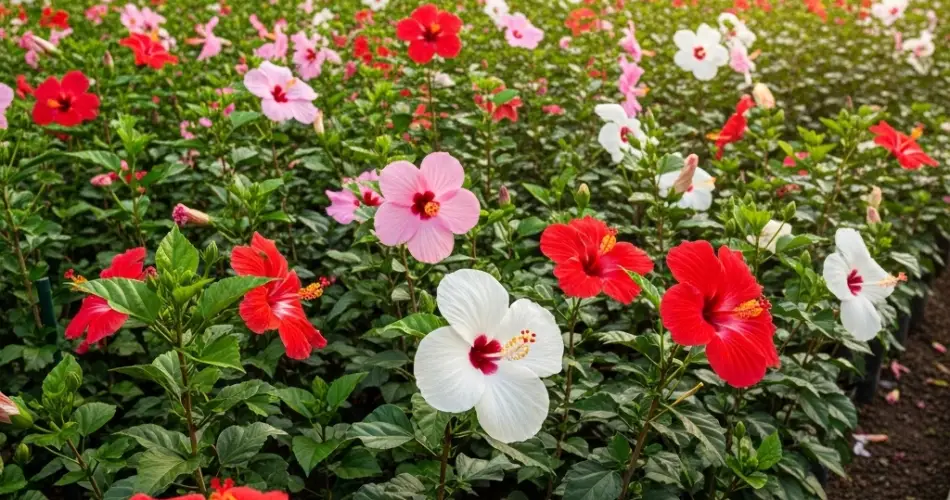The hibiscus is a stunning tropical plant known for its large, vibrant flowers that bring a splash of color to any space. While it’s typically grown outdoors in warm climates, hibiscus can also thrive indoors with the right care. Whether you’re growing tropical or hardy varieties, keeping a hibiscus healthy inside your home requires attention to light, temperature, watering, feeding, and more.
Here’s a complete guide to caring for hibiscus plants indoors so you can enjoy their bold blooms year-round.
1. Choosing the Right Hibiscus for Indoors
There are two main types of hibiscus:
-
Tropical hibiscus (Hibiscus rosa-sinensis): This is the most common type grown indoors. It features glossy green leaves and large, colorful blooms in shades of red, orange, yellow, pink, and more. It needs warm temperatures and lots of light.
-
Hardy hibiscus (Hibiscus moscheutos): More suited to outdoor gardens in cooler zones. While they can be brought indoors in winter, they typically go dormant and don’t flower inside.
For indoor growing, tropical hibiscus is the better choice as it stays evergreen and can bloom all year with proper conditions.
2. Provide Bright, Direct Light
Light is one of the most critical factors in successful indoor hibiscus care. These plants crave sunlight.
-
Place your hibiscus near a south- or west-facing window where it can get at least 6 hours of direct sunlight daily.
-
If natural light is limited, supplement with grow lights to maintain healthy growth and encourage flowering.
-
Rotate the plant every couple of weeks to ensure even light exposure and balanced growth.
Insufficient light leads to fewer blooms, leggy stems, and pale leaves.
3. Maintain Warm Temperatures
Hibiscus plants are native to warm tropical climates and do not tolerate cold well.
-
Keep indoor temperatures between 65°F and 75°F (18°C to 24°C) during the day, and never let it drop below 55°F (13°C) at night.
-
Avoid placing the plant near cold drafts, air conditioning vents, or heat sources like radiators, which can stress the plant.
-
If you’re moving your hibiscus indoors from the garden in fall, bring it inside before nighttime temperatures dip below 60°F (15°C).
4. Water Consistently but Carefully
Indoor hibiscus prefers evenly moist soil but doesn’t like sitting in water.
-
Water when the top inch of soil feels dry to the touch. Use your finger to check moisture levels.
-
Water deeply until it drains from the bottom of the pot, then empty the saucer to prevent root rot.
-
During winter, growth slows, and the plant may need less frequent watering. Always let the soil guide you.
Overwatering is a common mistake—wilting, yellow leaves, and soggy soil are all signs to reduce watering.
5. Use Well-Draining Potting Mix
Hibiscus plants need soil that drains well but holds enough moisture to keep roots hydrated.
-
Use a light, well-draining potting mix—a blend designed for tropical or flowering plants is ideal.
-
Adding perlite or coarse sand to the mix improves drainage.
-
Ensure the container has proper drainage holes to avoid waterlogging.
6. Fertilize During the Growing Season
Feeding your hibiscus ensures continuous blooming and healthy foliage.
-
Use a balanced, water-soluble fertilizer (such as 10-10-10 or one designed for flowering plants) every 2–4 weeks from spring through early fall.
-
Reduce or stop fertilizing in winter when the plant’s growth slows.
-
If using organic options like fish emulsion or compost tea, follow directions to avoid overfeeding.
Too much fertilizer can cause leaf burn or promote leafy growth at the expense of flowers.
7. Prune to Encourage Full Growth
Regular pruning keeps your hibiscus bushy and full, and encourages more blooms.
-
In early spring, prune back leggy stems to shape the plant and promote branching.
-
Remove dead or yellowing leaves and spent flowers to keep the plant tidy.
-
You can also pinch new growth tips to stimulate side shoots.
Pruning also improves airflow and reduces the risk of pests or disease.
8. Watch for Pests and Disease
Indoor hibiscus is susceptible to a few pests, especially in dry indoor conditions.
-
Spider mites, aphids, and whiteflies are the most common pests. Inspect leaves regularly, especially the undersides.
-
Treat infestations with insecticidal soap or neem oil, and rinse the leaves gently with water.
-
Ensure good air circulation and avoid overwatering to prevent fungal issues like root rot or leaf spot.
9. Repot When Needed
Hibiscus generally needs to be repotted every 2–3 years, or when the roots outgrow the container.
-
Choose a pot one size larger with good drainage.
-
Repot in spring using fresh soil to give the plant a boost for the growing season.
-
Gently loosen roots before placing the plant in its new pot.
Final Thoughts
Growing hibiscus indoors can be incredibly rewarding with the right care. These tropical beauties brighten any room with their bold flowers and lush foliage. By providing bright light, consistent watering, warm temperatures, regular feeding, and pest control, you can enjoy healthy, blooming hibiscus plants indoors all year long. With a little attention and routine care, your indoor hibiscus will reward you with vibrant color and a touch of the tropics in your home.



